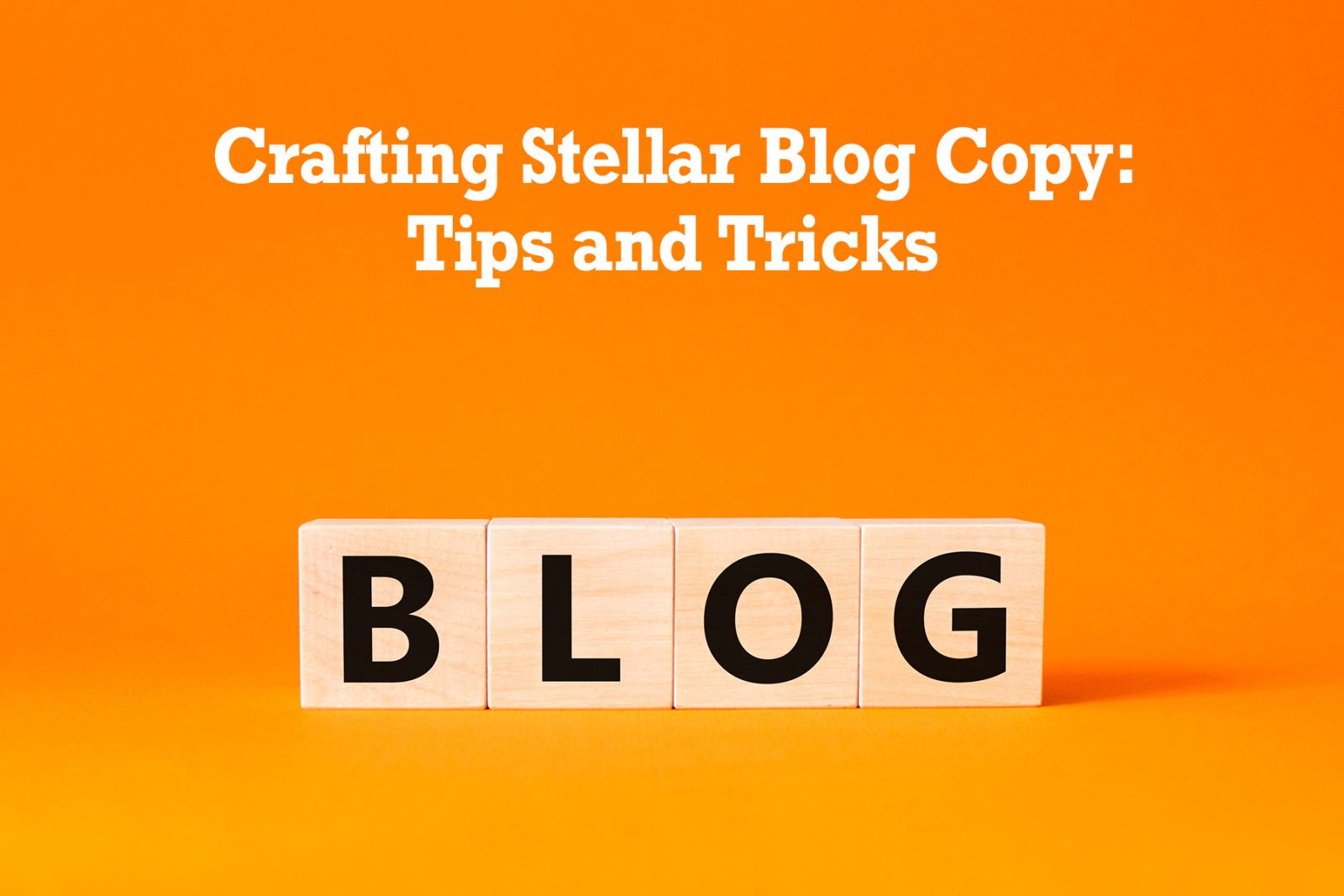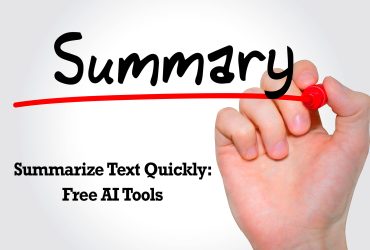Blog copy is the written content that populates your blog and is a critical component of your content marketing strategy. It’s the vehicle through which you communicate your brand’s message, share insights, and provide value to your audience. The significance of blog copy cannot be overstated—it’s often the first touchpoint potential customers have with your brand and can leave a lasting impression.
Well-crafted blog copy can do wonders for establishing your brand as an authority in your niche. By consistently producing high-quality content that addresses the needs and interests of your audience, you can cultivate trust and encourage readers to return for more. Engaging blog copy also prompts readers to share your content, expanding your reach and driving more engagement.
Quality blog copy has a direct impact on SEO and organic search rankings. Search engines favor informative, valuable, and relevant content to users’ queries. By optimizing your blog copy with targeted keywords and providing in-depth, quality content, you can improve your visibility in search results, attract more organic traffic, and, ultimately, enhance your site’s authority and rankings.
Knowing Your Audience: The Key to Effective Blog Copy
Understanding your target audience is crucial to crafting blog copy that hits the mark. You need to know what your readers are looking for, what challenges they face, and what solutions they seek. This knowledge allows you to create content that speaks directly to their needs, preferences, and pain points, making your blog an invaluable resource.
Conducting thorough audience research is the first step in this process. Surveys, social media listening, and analyzing user behavior on your website can provide insights into your audience’s interests and behaviors. Creating detailed buyer personas based on this research can help you tailor your blog copy to address the specific needs and desires of different segments of your audience.
Empathy and relevance are your allies when resonating with your audience. Your blog copy should provide answers and solutions and reflect an understanding of your readers’ situations. This connection fosters a sense of community and loyalty, encouraging readers to engage with your content and brand on a deeper level.
Crafting Compelling Headlines and Introductions
Headlines are the gatekeepers of your content—they either draw readers in or send them scrolling by. Crafting attention-grabbing headlines is a skill that involves balancing curiosity with clarity. Your headlines should be intriguing enough to make readers want to learn more and clear enough to set accurate expectations for the content.
The introduction sets the tone for your blog post and hooks the reader. A well-written introduction presents the topic, provides a hint of the value the reader will gain, and establishes a connection. It’s your chance to show readers why they should care about your words. Incorporating storytelling elements and addressing reader concerns early on can make your introductions more compelling.
Keywords play a vital role in headlines and introductions, not just for capturing readers’ attention but also for SEO optimization. Including relevant keywords helps search engines understand the context of your content and improves the chances of your blog appearing in search results. However, it’s crucial to balance SEO with readability—your headlines and introductions should be engaging and natural-sounding to readers and search engines.
Structuring Your Blog Copy for Readability and Engagement
Readability is essential for keeping readers engaged with your blog copy. Large blocks of text can be intimidating and discouraging. Using formatting elements like subheadings and bullet points makes your content easier to read and helps readers quickly find the most interesting information.
Visuals, lists, and multimedia elements can significantly enhance the engagement factor of your blog posts. Breaking up text with relevant images, infographics, videos, or audio clips provides a richer experience for readers and can help illustrate your points more effectively. Visuals also make your content more shareable and can lead to increased engagement on social media platforms.
A well-structured blog post guides readers through the content logically and intuitively. Organizing your thoughts clearly and providing signposts, like section headers, is essential to facilitate easy navigation. This structure benefits the reader and supports your SEO efforts by highlighting key topics and subtopics that search engine algorithms can recognize as indicators of a well-organized, valuable resource.
Using Persuasive Language and Storytelling Techniques
Storytelling is a timeless art that can turn your blog copy from mundane to magnetic. It captures readers’ attention by weaving facts into a narrative that resonates personally. By telling a story, you’re not just presenting information; you’re inviting readers into an experience, building emotional connections that can significantly enhance the memorability and impact of your content. When readers feel emotionally invested, they’re more likely to engage with your message and take action.
To persuade your readers effectively, focus on the benefits of your product or service, not just the features. Use language that speaks directly to the reader’s needs and desires, and always be clear about how your offering can improve their life or solve a problem. A strong call-to-action (CTA) is the final nudge to convert interest into action. Whether subscribing to a newsletter, downloading a whitepaper, or making a purchase, your CTA should be clear, compelling, and easy to follow.
Consider a blog post that starts with a customer’s journey, detailing their challenges and how the product or service provided a solution. This narrative approach demonstrates the value of the offering and allows readers to see themselves in the story. A blog post that ends with a powerful CTA, such as “Join the thousands who have found relief – try our solution today,” can turn a compelling story into a conversion opportunity.
Incorporating SEO Best Practices into Your Blog Copy
Keyword research is fundamental to SEO as it helps you understand what your target audience is searching for online. By optimizing your blog copy with relevant keywords, you improve your chances of ranking higher in search engine results, which can lead to increased traffic and visibility. However, it’s crucial to balance keyword usage with the natural flow of your writing to maintain readability and user experience.
To integrate keywords naturally, include them in your headlines, subheadings, and throughout your content in a way that feels organic. Use synonyms and related phrases to diversify your language and avoid keyword stuffing. The goal is to ensure that your content is easily discoverable by search engines while still engaging and valuable to your readers.
Meta descriptions briefly summarize your blog post’s content and should include your primary keyword to boost SEO. Alt text for images helps search engines understand visuals’ content and should include relevant keywords. Internal linking encourages readers to explore more of your website and helps search engines understand the structure and hierarchy of your content, which can contribute to better rankings.
Optimizing Blog Copy for Mobile Responsiveness
With the majority of online traffic now coming from mobile devices, it’s essential to ensure your blog copy is optimized for smaller screens. Mobile responsiveness affects user experience and SEO rankings, as search engines like Google prioritize mobile-friendly websites. Readers are more likely to stay engaged with content that is easy to read and navigate on their devices.
To optimize your blog for mobile, use a responsive design that adapts to different screen sizes. Keep paragraphs short, use large, readable fonts, and ensure your website has fast loading times to reduce bounce rates. Compress images and leverage caching to improve speed, and consider the placement of CTAs to ensure they are easily clickable on touchscreens.
When creating layouts for mobile, prioritize simplicity and clarity. Break up text with subheadings and bullet points to enhance readability. Use optimized visuals for mobile, meaning they should load quickly and be easily viewable on smaller screens. Test your blog on multiple devices to ensure a seamless experience for all users.
Leveraging Data and Analytics to Improve Blog Copy Performance
Data-driven insights allow you to understand how your audience interacts with your blog copy. By analyzing metrics such as time on page, bounce rate, and conversion rate, you can identify what resonates with your readers and where there’s room for improvement. This information is invaluable for refining your content strategy and ensuring your blog posts are as effective as possible.
Utilize analytics tools like Google Analytics to track the performance of your blog posts. Set up goals to measure conversions and monitor traffic sources to understand where your readers are coming from. Regularly review your analytics to identify trends and patterns that can inform your content creation and optimization strategies.
A/B testing allows you to compare different blog post versions to see which performs better. Test elements like headlines, images, and CTAs to determine what drives higher engagement and conversions. Analyze the metrics from these tests to make informed decisions about your blog copy and continually refine your approach based on what the data tells you.
Collaborating with Designers and Visual Content Creators
Visual elements such as graphics, photos, and videos can significantly enhance the appeal of your blog copy. They break up text, illustrate points, and convey information more effectively than words alone. Collaborating with skilled designers and visual content creators can elevate the quality of your blog posts and help them stand out in a crowded content landscape.
Working with designers and visual content creators ensures that your visuals are attractive and aligned with your brand identity and messaging. These professionals can help you create custom graphics, infographics, and multimedia elements that complement your blog copy and resonate with your audience.
Choose relevant visuals to your content and add value to your message. Ensure that images have a high resolution and are appropriately sized for your blog layout. Use visuals to break up long text sections and illustrate complex ideas. Remember to include alt text for images to improve accessibility and SEO. By thoughtfully incorporating visuals, you can create a more engaging and memorable blog post that captivates your audience.
Building Trust and Authority through Blog Copy
Gaining the trust of your readers is essential for a successful blog. Credibility is about providing information that readers can depend on, while authenticity means being true to yourself and your voice in your writing. Transparency is about being upfront about any potential biases. When a blog demonstrates these qualities, it’s more likely to be trusted by its readers, who will see the author as a reliable source of information.
It’s essential to support your statements with solid evidence to be an authority in your blog. This could mean citing credible sources, including relevant statistics, or sharing case studies. Always link to the sources where readers can verify the information. Sharing your experiences and insights can also help demonstrate your expertise, making you appear more knowledgeable about the subject.
Blog posts that successfully build trust often include well-researched information, clear explanations, and a friendly tone that readers can relate to. For instance, a blog about health might use medical research, expert interviews, and stories of personal health journeys to create a trustworthy article. By blending accurate information with engaging narratives, these posts can educate and connect with readers, encouraging them to keep coming back for more.
Engaging and Responding to Your Audience Through Blog Copy
A blog encouraging reader interaction is a great way to build a community around your brand. When readers are invited to contribute their thoughts, it keeps them on your site longer and helps cultivate a sense of belonging and loyalty.
To boost engagement, consider ending your posts with a question or a call to action that encourages readers to leave comments. Include social media sharing buttons and create engaging quotes or messages that can easily be shared online. You can also engage your audience with contests or surveys, increasing your blog’s interaction and visibility.
Taking the time to respond to comments shows your readers that you value their opinions. Address their feedback, answer questions, and join the conversation to create a welcoming community atmosphere. This can lead to a loyal readership more likely to advocate for your brand.
Creating Evergreen Content and Repurposing Blog Copy
Evergreen content is a valuable asset because it attracts readers long after publication. This type of content can consistently bring in traffic and doesn’t require frequent updates, making it a reliable resource that can establish your site as a go-to authority.
Transforming your blog content into different formats can help reach a wider audience. For example, you could compile blog posts into an ebook, summarize essential information in an infographic, or delve deeper into a subject in a podcast. This leverages your existing content to cater to different preferences and can introduce your work to new audiences.
Even evergreen content can benefit from updates to stay current and relevant. Refreshing your posts with the latest data or trends can breathe new life into them and improve search rankings. Treat the content as new to attract new and repeat visitors when updating.
Measuring Success and Iterating on Your Blog Copy Strategy
Having clear goals and tracking performance indicators are crucial for understanding how well your blog is doing. Whether you’re looking to increase traffic, engagement, or leads, measuring your blog’s performance helps you see if you’re meeting your targets and allows you to adjust your strategy for better outcomes.
Monitor metrics such as page views, time spent on the site, bounce rate, and how often your content is shared. Use analytics tools to track these metrics and look for patterns that could indicate where improvements are needed. Experiment with different headlines or content formats and refine your strategy based on the data.
The digital world constantly changes, and staying current with the latest trends is essential. Keep learning by attending webinars, reading industry blogs, and joining online forums. Be open to trying new strategies and adjusting to algorithm updates or user behavior changes. Staying flexible and informed will help keep your blog content effective and engaging.





